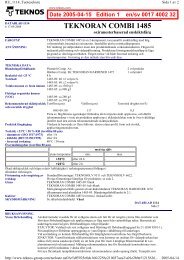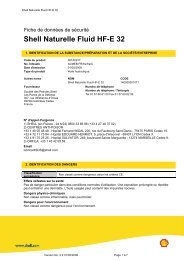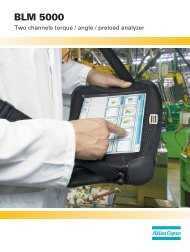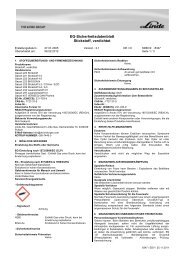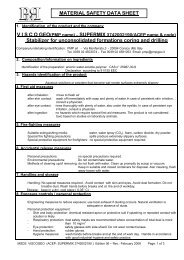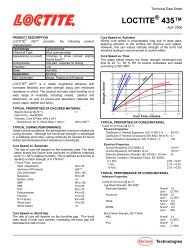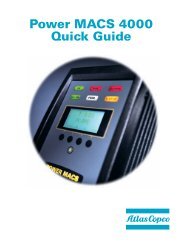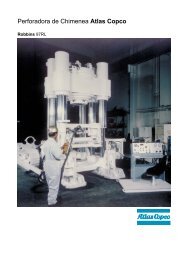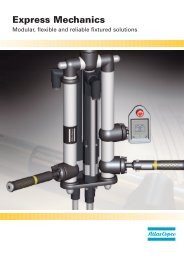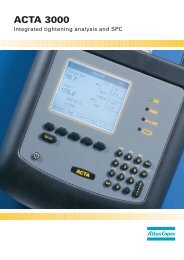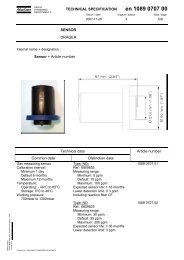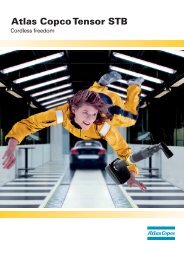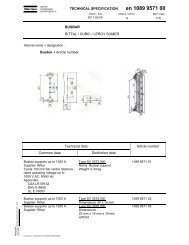Ergonomics - Atlas Copco
Ergonomics - Atlas Copco
Ergonomics - Atlas Copco
Create successful ePaper yourself
Turn your PDF publications into a flip-book with our unique Google optimized e-Paper software.
1<br />
A seated operator usually has good stability<br />
and is thus capable of performing tasks re-<br />
quiring precision or fine manipulative move-<br />
ment, especially if provided with armrests.<br />
Max 15 0<br />
Static load on the neck and shoulder muscles<br />
should be reduced where possible. The static load<br />
increases with the angle of the head in relation to<br />
the vertical plane.<br />
However, when seated, the operator has less<br />
mobility and is unable to apply the same<br />
degree of force.<br />
When applying ergonomics to the design<br />
of a sitting workstation, working postures<br />
and musculoskeletal load must be taken<br />
into account. This is particularly true for<br />
the low back, the shoulder, and the upper<br />
extremities. Ergonomic workstation design<br />
means careful study of the relationships<br />
between workstation, seat, tools and tasks<br />
to be performed (i.e., product design and<br />
method of manufacture), with the aim of<br />
improving working postures and reducing<br />
musculoskeletal load. The operator’s reach<br />
range and force capacity in a sitting position<br />
are also important design criteria.<br />
The work table<br />
and chair<br />
According to general ergonomic guidelines,<br />
working for long periods with the shoulders<br />
elevated or the arms fully extended should<br />
be avoided wherever possible. Work should<br />
be performed with the trunk upright and<br />
the head in an upright or slightly forward<br />
position, to avoid undesirable twisting. It is<br />
also important to provide sufficient legroom.<br />
Due to the anthropometric differences<br />
between individual operators, i.e., the



